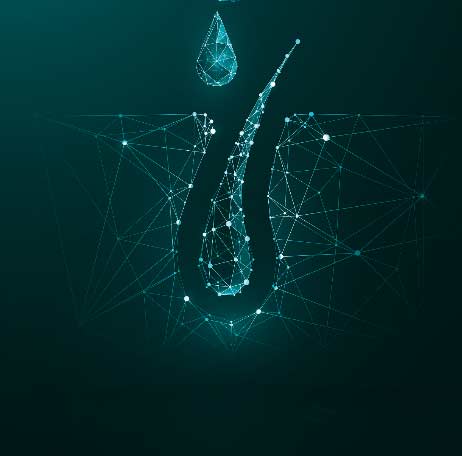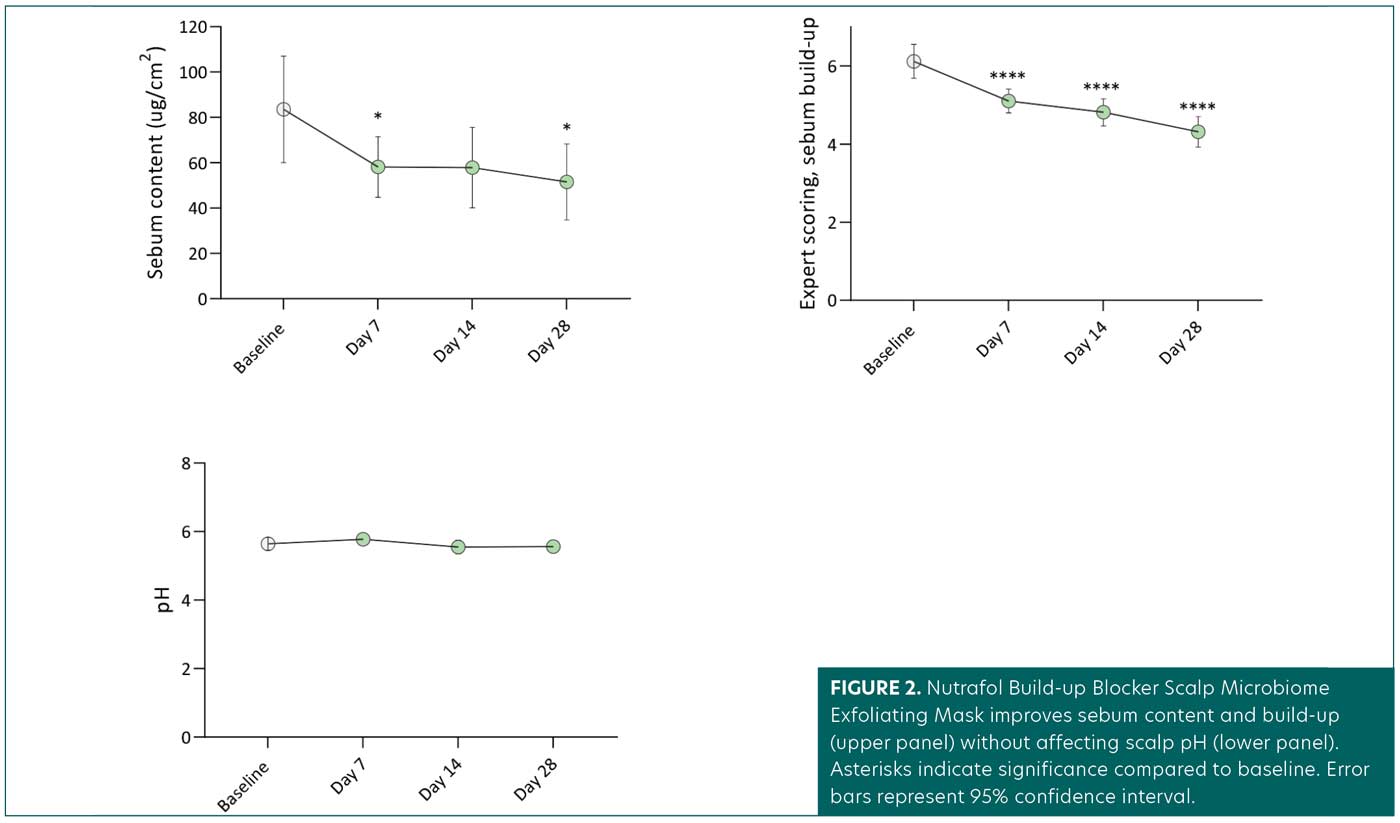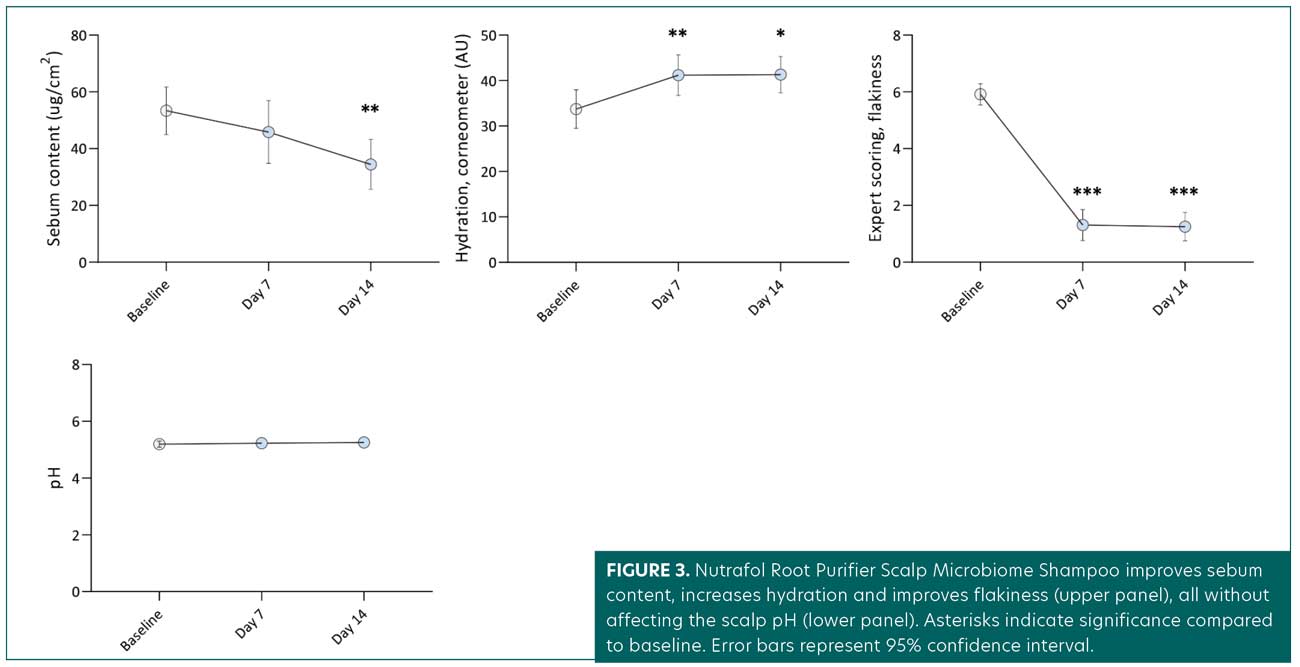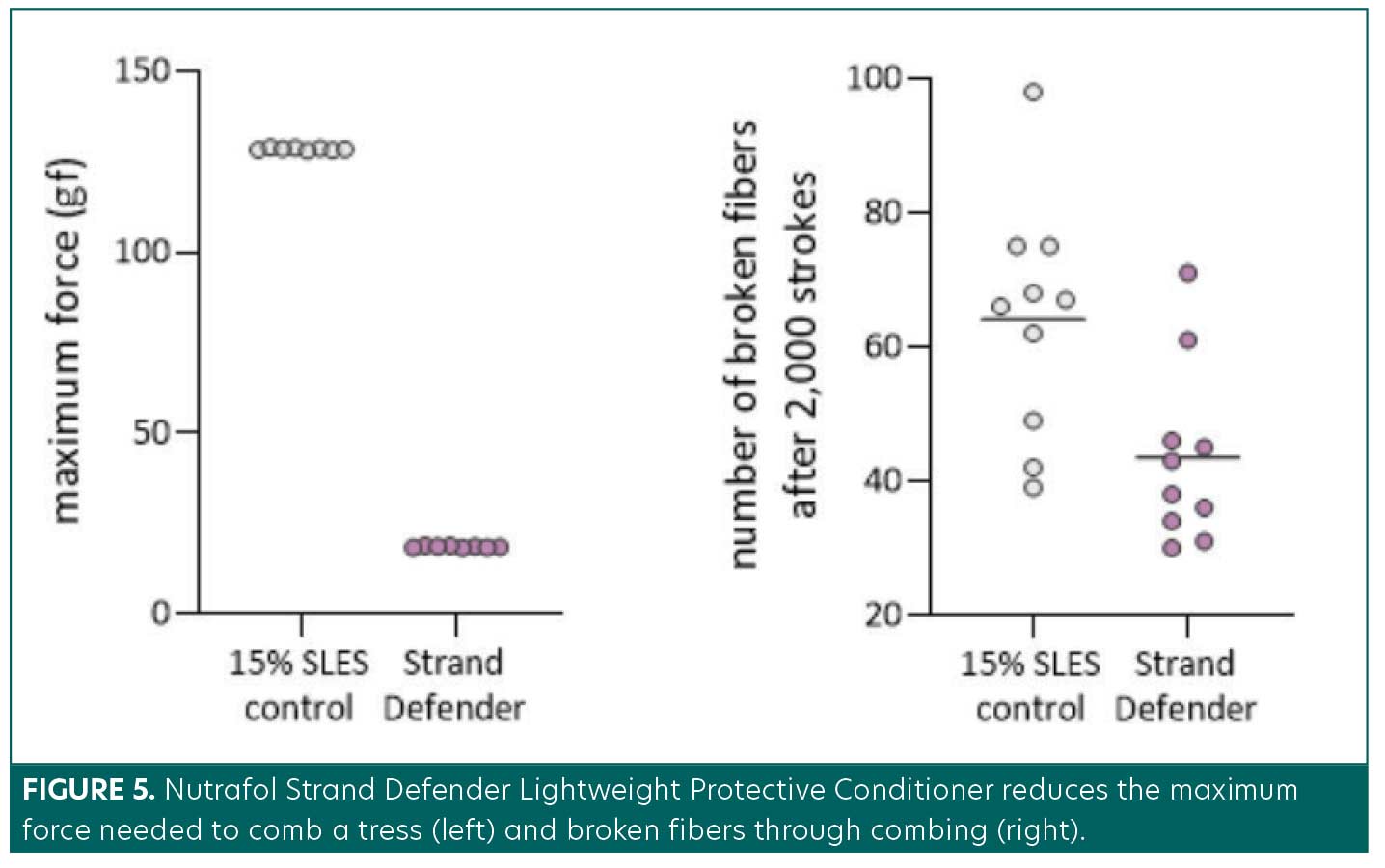 J Clin Aesthet Dermatol. 2023;16(10 Suppl 1):S4–S11.
J Clin Aesthet Dermatol. 2023;16(10 Suppl 1):S4–S11.
by Nicole Townsend, BA; Adina Hazan, PhD; and Giorgio Dell’Acqua, PhD
Ms. Townsend is the Formulation and Product Innovation Manager at Nutraceutical Wellness, LLC, in New York, New York. Dr. Hazan is the Director of Scientific and Medical Communications at Nutraceutical Wellness, Inc, in New York, New York. Dr. Dell’Acqua is the Chief Science Officer at Nutraceutical Wellness, LLC, in New York, New York.
FUNDING: Funding for this supplement was provided by Nutraceutical Wellness, Inc.
Introduction
The human body surface (skin and scalp) is an ecological niche for an abundance of diverse bacteria and fungi, composing a “microbiome” (102–107 bacteria per cm2 of skin).1 The resident microbes have a dynamic, mutualistic relationship with their host and are now known to positively contribute to several important biological functions in the skin.1 This includes modulating the inflammatory response and creating a barrier to infection.1 On the other hand, it is also now clear that dysregulation of the microbiome (including in the gut), can negatively affect the skin, hair, and underlying systems, and that maintaining a balanced microbiome consisting of a variety of bacteria and fungi is critical.1,2 Furthermore, gut and cutaneous microbiome dysbiosis have largely been implicated in the pathogenesis of alopecia areata and other hair loss disorders.3
The sensitive equilibrium of the microbiome composition is affected by intrinsic factors, such as age, sex, diet, and genetics, as well as extrinsic factors, such as pollution, ultraviolet (UV) radiation, and cosmetics.1 The surface microenvironment and its properties also partially determine the colonization of specific microbes; moisture, pH, sebum content, and other factors all affect the profile of bacteria that reside in the area.1
More specifically, the scalp’s unique oxygen availability, sebum content, moisture, pH, and abundance of hair follicles create a distinct environment for microorganism proliferation.1,4 In terms of fungal commensals, Malassezia yeasts (specifically M. restricta and M. globosa) are highly abundant on the scalp, representing 90 percent of the fungal genera.1,5,6 Bacteria that are highly distributed across the scalp are Staphylococcus capitis (S. capitis), Staphylococcus epidermidis (S. epidermidis) and Cutibacterium acnes (C. acnes).6
Research has shown that these commensals directly interact with the host skin. S. epidermidis can induce an immune response via Toll-like receptor induction, but it may also play a positive role in inhibiting pathogens, such as S. aureus. C. acnes, identified in the hair follicle at depths as far as 1,020μm from the surface, is able to metabolize sebum triglycerides into short-chain fatty acids, which help maintain skin pH,1,7–9 and reductions in C. acnes are associated with reduced triglyceride hydrolysis and reduced abundance of free fatty acids on skin.10,11 Microbes are also an inherent part of the skin barrier function and protection, including as a physical barrier and as protection against pathogenic colonization.1,8 Skin barrier function is greatly impacted by changes in pH, as high pH can induce swelling of the stratum corneum,12 leading to irritation and disruption of the microenvironment for commensal microbes.13 On the other hand, maintaining an ideal scalp pH, reported to be between 5 to 6, supports a diverse microbiome and promotes a healthy scalp.14–16
Excessive Malassezia spp. and oxidation of squalene on scalp has been correlated to dandruff and seborrheic dermatitis conditions.1,6,17 This is thought to be partly due to reactive oxygen species (ROS) produced by Malassezia spp., leading to damage to the emerging hair follicles.18,19 Increased S. capitis and decreased C. acnes has also been correlated with dandruff.6,20 Furthermore, research has shown that a disturbed balance of the resident cutaneous microbes is correlated to inflammatory disorders and cutaneous infections.4,8,21,22 Overall, products that protect and promote appropriate diversity of the skin microbiome are correlated with healthy, functional skin.23–26 In a clinical study evaluating the scalp microbiomes of dandruff-afflicted subjects and healthy controls, it was observed that healthy subjects had relatively stable scalp microbe communities, whereas dandruff scalp microbiomes had closer interdependence and interaction relationships that were more susceptible to environmental interference.27 This susceptibility to external interference highlights the association between microbiome community structure and scalp barrier integrity.
Despite the beneficial interactions commensal microbes provide, dysbiosis in the microbiome is linked to scalp and skin disorders, highlighting the role of the host-bacterial community interdependence.1,4,8 A perturbed scalp microbiome is clinically correlated with sensitive scalp and is physiologically characterized by excess sebum.4 In a 2022 epidemiological study of 317 patients with hair loss disorders, 32 percent of patients complained of sensitive scalp symptoms, which highlights the correlation between scalp integrity and hair health.28 To further bridge the relationship between sensitive scalp, hair loss disorders, and the microbiome, new research has evaluated the correlation between alopecia areata and distinctly different microbiome composition, compared to healthy subjects. In a 2022 clinical study measuring the scalp microbiome composition of patients with alopecia areata, it was noted that there was a significantly higher proportion of Corynebacterium species and lower proportion of Staphylococcus species in subjects with severe alopecia areata, compared to healthy controls and subjects with mild alopecia areata. It is important to note that the study could not confirm the species-level correlation of Corynebacterium to the prognosis of alopecia areata.29 While more research is needed to fully elucidate the appropriate levels of all microbes, it is becoming clear that the microbiome plays an important role in hair health. Emerging research has shown the potential of microbiome modulation for hair loss treatments, using novel strains of S. epidermidis Cicaria in an ex vivo hair follicle dermal papilla cell model.30 A considerable wave of research correlating the scalp microbiome to hair health emphasizes the importance of maintaining scalp microbiome homeostasis in order to promote not only scalp barrier integrity, but potentially hair follicle growth cycling.
Do No Harm
Just as the fundamental rule of the Hippocratic Oath in modern medicine is to first and foremost do no harm, the products we use to maintain or improve scalp and hair health should at least preserve the microbiome.13,21 As evidence for links between microbiome imbalances and scalp/skin disorders mounts, research turns toward more natural therapies to improve scalp and hair health without causing dysbiosis of the microbiome.16 By focusing on improving hydration, preventing oxidative stress, and balancing sebum production while preserving natural pH, ingredients can improve clinical signs of a distressed scalp while still maintaining a healthy microbiome.13,16,20 In turn, the healthy microbiome leads to decreased sensitivity, redness, flakiness, and sebum production.6
One way to differentiate between products that may disrupt the microbiome versus gentle ingredients that promote a healthy microbial balance is to go through a third-party tested Microbiome Friendly Certification. Specifically, MyMicrobiome evaluates a product in vitro against agar plates inoculated with the microbial species that inhabit the skin and/or scalp: Cutibacterium, Staphylococci, and the major fungal genera Malassezia. The addition of the product to these plates gives an early indication of both bacterial and fungal modulation, as well as possible growth inhibition. Their seal indicates a product’s potential in maintaining microbial balance, diversity, and vitality. This certification may provide evidence that product formulations are compatible with microbiota conservation. Promoting a healthy and balanced environment may help provide the optimal conditions for healthier emerging hairs.6,13,16 As microbiome research evolves, new validated test models outside of in vitro assays are integral for assessing topical products’ effect on the scalp microbiome with in vivo applications (Figure 1).
Once the products were confirmed to maintain appropriate levels of scalp microbes, we tested the individual products for clinical improvements in various scalp parameters, such as oiliness, redness, or flakiness. Individual studies are described below.
Products that Rebalance
Build-Up Blocker Scalp Microbiome Exfoliating Mask. Excess sebum can impact the scalp and is a problem for emerging hair follicles for several reasons. Clinically, excess sebum is linked to a sensitive, flaky scalp.14 Oily dandruff conditions are correlated with increased expression of proinflammatory cytokines, as well as impaired stratum corneum of the scalp barrier.15 Dandruff is also linked to an increase in transepidermal water loss (TEWL), higher pH, and reduced hydration.13,15,16
Excess sebum can create a favorable environment for the overgrowth of lipophilic microbes, such as Malassezia.6,24 Despite their abundant residence on healthy scalps, excessive levels of these microbes have been implicated in dandruff and seborrheic dermatitis, so limiting their presence without eradicating the species from the scalp can contribute to a healthier scalp.31,32 A recent study reported significantly higher levels of sebum and lower bacterial diversity in subjects with sensitive scalp, compared to the nonsensitive group.14 Taken together, it is clear that addressing excessive sebum while maintaining a balanced microbiome is an essential part of a healthy scalp.
While there are many products that aim to balance sebum production, some do so by using ingredients, such as sodium lauryl sulfate (SLS), that destroy the microbiome and dry the skin in patch tests.33 Instead of these ingredients, there are physical compounds shown to reduce sebum on the scalp, but not eliminate it. Jojoba ester beads, which are biodegradable, act as mechanical exfoliants, and gently remove dead scalp cells. Sarcosine, an amino acid derivative, has been shown to reduce sebum on the scalp, therefore reducing the “food” for lipophilic bacteria and yeasts, such as Cutibacterium and Malassezia species, respectively. Sarcosine has also been found to increase the microbial diversity of scalp skin over time, which helps build a healthier scalp environment for hair health. Lastly, Australian wild berries provide antioxidants to protect against environmental stressors and reduce the oxidative stress (ROS) induced by proliferating Malassezia.
To test the efficacy of Nutrafol’s Build-up Blocker Mask, a clinical study was completed in individuals with moderate-to-high sebum build-up (n=38, Figure 2). After using the mask, 100 percent of users had an immediate reduction of sebum build-up, which was statistically significant. There was also a significant reduction in sebum levels over the course of 1 to 4 weeks of consistent use. Sebum build-up assessed by an expert grader also improved over time. All of this was accomplished without deviating from an optimal pH on the scalp.
Root Purifier Scalp Microbiome Shampoo. The importance of using the right shampoo that supports a healthy scalp cannot be overstated. Cleansing products used in a daily routine can impact the microbial community on the human skin, hence the need for microbiome-safe products.26 Many cosmetic products use SLS, a common chemical surfactant, to cleanse. However, SLS has been shown to significantly alter microbial diversity, as well as reduce the relative abundance on the skin. It also increases TEWL, inducing skin barrier function impairment.26,33 In addition, SLS can impact the lipophilic intercellular lipids that are integral to skin barrier function.13,34,37 All these effects negatively impact resident microbes of the scalp. Through a gentler approach in which the microbiome is preserved and skin barrier integrity is maintained, shampoo can be a part of a healthy repair mechanism for the scalp and emerging hair.
There are many naturally derived ingredients that have been found to have beneficial, cleansing effects on the scalp. For instance, a biosurfactant that is yeast-fermented and lipid-based to gently cleanse the scalp without stripping it of its natural oils can be used. Australian wild berries are a source of antioxidants to protect the scalp and emerging hair follicles. Vegan proteins provide amino acids, which penetrate the hair shaft, as well as confer protection through their film-forming properties. Finally, the prebiotic alpha-glucan oligosaccharide has been shown to encourage healthy growth of the microbiome during cleansing.
Use of Nutrafol’s Root Purifier Scalp Microbiome Shampoo at home following normal frequency of use (minimum 3 times per week) in populations with oily, dry, and/or self-perceived sensitive scalp (n=37, Figure 3) achieved a significant decrease in sebum and increase in hydration. By decreasing sebum without stripping the scalp of all natural oils, Nutrafol Root Purifier Shampoo gently cleansed without disrupting the microenvironment for commensal microbes. These changes manifested as a decrease in flakiness, when scored by an expert grader, with 100 percent of subjects self-reporting improvement in dry, flaky scalp. These benefits were achieved while maintaining an optimal scalp pH and allowing for normal growth of the common microbes. This combination ensures a healthy scalp and microenvironment for emerging hair.
Stress Reliever Scalp Microbiome Essence. Once cleansed of toxins and excess sebum, adding key ingredients to maintain and boost the scalp’s defenses against potential stressors can promote and maintain a healthy microflora and reduce the development of dryness, irritation, and flakiness.
The scalp microenvironment niche maintains pH, sebum content, hair follicle density, oxygen, and nutrient access, all of which contribute to developing a unique microbiome. By expressly understanding and nurturing this specific area, tailored products can enrich and promote a healthy scalp, which in turn promotes healthy hair. Specifically, the microbiome of the scalp is predominantly colonized by lipophilic microbes, due to the abundance of sebum.22 Including prebiotics and postbiotics into products applied to the scalp can feed the microbiome while maintaining diversity of microbes.35 Peach gum and prickly pear have been shown to reduce redness and flakiness. A zinc complex extracted from smithsonite stone protects the scalp by preventing UVB damage of keratinocytes and improves collagen due to its antiglycation properties.
Nutrafol’s Stress Reliever Scalp Essence, a unique blend of functional and active ingredients for daily use, was clinically shown to improve signs of an irritated scalp. When tested clinically (n=33, Figure 4), the product decreased sebum content and increased hydration. It also reduced redness and flakiness scores by an expert grader. Likewise, 97 percent of users felt their scalp was soothed after incorporating it into their weekly routine for four weeks. In addition, the MyMicrobiome testing showed that the natural microbial growth of the scalp was unhindered with direct contact of the product. Importantly, application of Nutrafol Essence on the scalp had all these positive effects while maintaining an optimal scalp pH over time.
Strand Defender Lightweight Protective Conditioner. The role of a conditioner differs from that of a mask, shampoo, or essence. Whereas the previous products provide support for a healthy scalp microenvironment for the hair follicle and emerging hair strand, conditioners protect the hair strand once it has emerged. That is, conditioners provide lubrication between hair fibers to minimize the force needed when combing and prevent breakage and tangles.
There are many ingredients that can be used to provide protective qualities to the hair strand. Fermented amino acids and arginine have been shown to covalently bond to amino acids and keratin fragments in human hair, including broken disulfide linkages, to reduce porosity and repair damaged keratin fibers. Ximenia oil, rich in fatty acids and vitamin C, can provide silicone-like properties to lubricate hair and prevent dryness. It also helps by reducing and/or preventing irritation due to the presence of ximenynic acid. Glucose fibers (hydroxypropyl gluconamide) generate new hydrogen and ionic bonds within the helix of the hair fiber. Sea buckthorn, which is rich in vitamins and fatty acids, improves elasticity and strengthens hair. Lastly, wheat proteins help to reduce hair breakage and improve mechanical resistance to physical and chemical stressors. All of these ingredients have been shown to have potentially beneficial effects in preventing breakage and protecting the hair shaft.
A useful method to test if a conditioner prevents breakage is through an automated maximum force test or repeat grooming test. In both tests, bleached hair tresses are treated with a conditioner or nonconditioning surfactant solution and then repeatedly combed. If a conditioner decreases friction between hair fibers, it will decrease the force needed to comb through the tress. As shown in Figure 5, Nutrafol’s Strand Defender Lightweight Protective Conditioner significantly decreased the maximum force needed to comb through all the tresses, demonstrating reduced friction between hair strands. Moreover, the conditioner was assessed for its properties in decreasing snags, entanglements, and abrasion between the hair fibers, measured by a reduction in the number of broken hair fibers when combing. The conditioner resulted in a reduced number of broken hair fibers measured over the course of 2,000 strokes of an automated grooming device. Thus, the addition of Nutrafol’s Strand Defender Lightweight Protective Conditioner to a personal care regimen can support the look of a healthy emerged hair shaft.
Conclusion
In this paper, we highlighted the importance of the scalp microbiome for a healthy scalp. Recent literature has shown a correlation between scalp dysbiosis and both excess sebum and increased scalp irritation.14 Moreover, increased evidence suggests a link between sensitive scalp, the scalp microbiome, and healthy hair.21,22 We have formulated products containing ingredients that are meant to rebalance excess sebum, increase hydration, and reduce scalp irritation and flakiness, when present. These products do not significantly alter the scalp pH, and in vitro assays show no harm to the scalp microbiome. We believe that a gentle approach is needed when formulating topical products for the hair and scalp, and by selecting the most appropriate blend of gentle ingredients, we can improve scalp conditions.
References
- Grice EA, Segre JA. The skin microbiome. Nat Rev Microbiol. 2011;9(4):244–253.
- Maslowski KM, Mackay CR. Diet, gut microbiota and immune responses. Nat Immunol. 2011;12(1):5–9.
- Rinaldi F, Pinto D, Borsani E, et al. The first evidence of bacterial foci in the hair part and dermal papilla of scalp hair follicles: a pilot comparative study in alopecia areata. Int J Mol Sci. 2022;23(19):11956.
- Hay RJ. Malassezia, dandruff and seborrhoeic dermatitis: an overview. Br J Dermatol. 2011;165 Suppl 2:2–8.
- Spatz M, Richard ML. Overview of the potential role of Malassezia in gut health and disease. Front Cell Infect Microbiol. 2020;10:201.
- Grimshaw SG, Smith AM, Arnold DS, et al. The diversity and abundance of fungi and bacteria on the healthy and dandruff affected human scalp. PLoS One. 2019;14(12):e0225796.
- Dessinioti C, Katsambas AD. The role of Propionibacterium acnes in acne pathogenesis: facts and controversies. Clin Dermatol. 2010;28(1):2–7.
- Lai Y, Di Nardo A, Nakatsuji T, et al. Commensal bacteria regulate Toll-like receptor 3-dependent inflammation after skin injury. Nat Med. 2009;15(12):1377–1382.
- Jahns AC, Alexeyev OA. Three dimensional distribution of Propionibacterium acnes biofilms in human skin. Exp Dermatol. 2014;23(9):682–689.
- Shalita AR. Genesis of free fatty acids. J Invest Dermatol. 1974;62(3):332–335.
- Marples RR, Mcginley, KJ. Corynebacterium acnes and other anaerobic diptheroids from human skin. J Med Microbiol. 1974;7(3):349–358.
- Ananthapadmanabhan KP. pH-induced alterations in stratum corneum properties. Int J Cosmet Sci. 2003;25(3):103–112.
- Diaz D, Ditre, C. The effect of cleansers on the skin microbiome. Pract Dermatol. 2020:62–65.
- Ma L, Guichard A, Cheng Y, et al. Sensitive scalp is associated with excessive sebum and perturbed microbiome. J Cosmet Dermatol. 2019;18(3):922–928.
- Yoon JS, Shim J, Lim JM, Park SG. Biophysical characteristics of dandruff-affected scalp categorized on the basis of sebum levels. J Cosmet Dermatol. 2021;20(3):1002–1008.
- Gavazzoni Dias MF, de Almeida AM, Cecato PM, et al. The shampoo pH can affect the hair: myth or reality? Int J Trichology. 2014;6(3):95–99.
- Jourdain R. Exploration of scalp surface lipids reveals squalene peroxide as a potential actor in dandruff condition. Arch Dermatol Res. 2016;307(3):153-63.
- Trueb RM. Oxidative stress and its impact on skin, scalp and hair. Int J Cosmet Sci. 2021;43 Suppl 1:S9–S13.
- Schwartz JR, Henry JP, Kerr KM, et al. The role of oxidative damage in poor scalp health: ramifications to causality and associated hair growth. Int J Cosmet Sci. 2015;37 Suppl 2:9–15.
- Farahmand S. Microbiome of compromised skin. In: Dayan N, ed. Skin Microbiome Handbook: From Basic Research to Product Development. John Wiley & Sons; 2020:145–169.
- Belkaid Y, Segre JA. Dialogue between skin microbiota and immunity. Science. 2014;346(6212):954–959.
- Polak-Witka K, Rudnicka L, Blume-et al. The role of the microbiome in scalp hair follicle biology and disease. Exp Dermatol. 2020;29(3):286–294.
- Alekseyenko AV, Perez-Perez GI, De Souza A, et al. Community differentiation of the cutaneous microbiota in psoriasis. Microbiome. 2013;1(1):31.
- Gao Z, Tseng CH, Strober BE, et al. Substantial alterations of the cutaneous bacterial biota in psoriatic lesions. PLoS One. 2008;3(7):e2719.
- Kong HH, Oh J, Deming C, et al. Temporal shifts in the skin microbiome associated with disease flares and treatment in children with atopic dermatitis. Genome Res. 2012;22(5):850–859.
- Wallen-Russell C, Wallen-Russell S. Meta analysis of skin microbiome: new link between skin microbiota diversity and skin health with proposal to use this as a future mechanism to determine whether cosmetic products damage the skin. Cosmetics. 2017;4(2):14.
- Tsai W-H, Fang Y-T, Huang T-Y, et al. Heat-killed Lacticaseibacillus paracasei GMNL-653 ameliorates human scalp health by regulating scalp microbiome. BMC Microbiol. 2023;23:121.
- Burroni AG, Trave I, Herzum A, Parodi A. Sensitive scalp: an epidemiologic study in patients with hair loss. Dermatol Reports. 2022;14(3):9408.
- Won EJ, Jang HH, Park H, Kim SJ. A potential predictive role of the scalp microbiome profiling in patients with alopecia areata: Staphylococcus caprae, Corynebacterium, and Cutibacterium species. Microorganisms. 2022;10(5):864.
- Jo H, Kim SY, Kang BH, et al. Staphylococcus epidermidis Cicaria, a novel strain derived from the human microbiome, and its efficacy as a treatment for hair loss. Molecules. 2022;27(16):5136.
- Saxena R, Mittal P, Clavaud C, et al. Comparison of healthy and dandruff scalp microbiome reveals the role of commensals in scalp health. Front Cell Infect Microbiol. 2018;8:346.
- Clavaud C, Jourdain R, Bar-Hen A, et al. Dandruff is associated with disequilibrium in the proportion of the major bacterial and fungal populations colonizing the scalp. PLoS One. 2013;8(3):e58203.
- Leoty-Okombi S, Gillaizeau F, Leuillet S, et al. Effect of sodium lauryl sulfate (SLS) applied as a patch on human skin physiology and its microbiota. Cosmetics. 2021;8(1):6.
- Carvalho MJ, S Oliveira AL, Santos Pedrosa S, et al. Skin microbiota and the cosmetic industry. Microb Ecol. 2023;86(1):86–96.
- Guichard A. What if scalp flora was involved in sensitive scalp onset? Int J Cosmet Sci. 2015;38(4):429–430.






